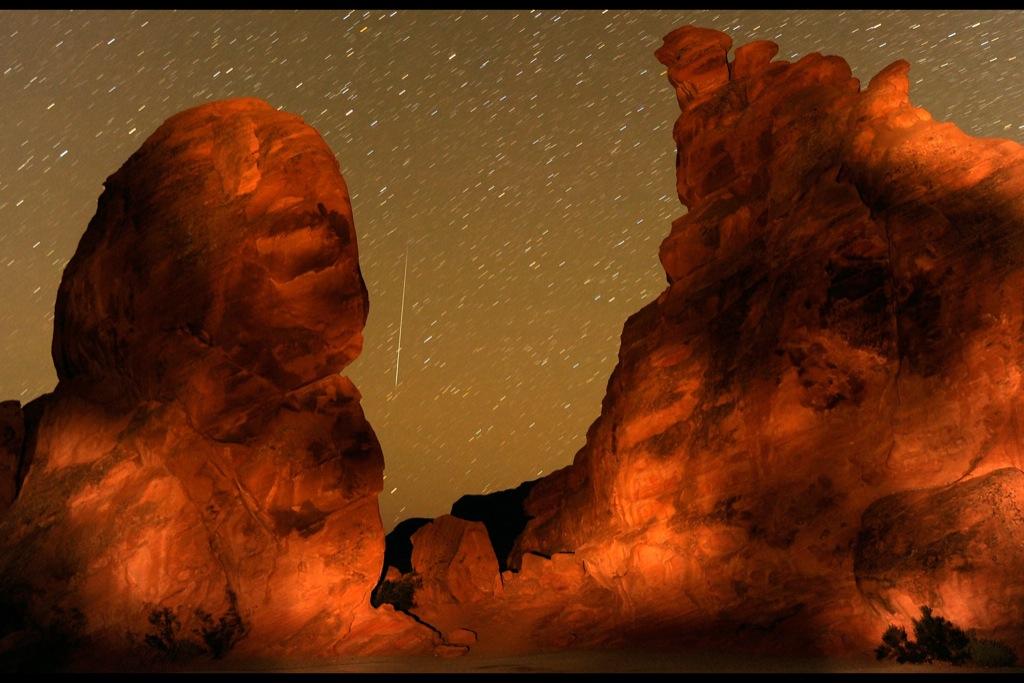Geminid meteor shower tonight
A Geminid meteor streaks diagonally across the sky against a field of star trails behind one of the peaks of the Seven Sisters rock formation in this long exposure early December 14, 2010 in the Valley of Fire State Park in Nevada. The meteor display, known as the Geminid meteor shower because it appears to radiate from the constellation Gemini, is thought to be the result of debris cast off from an asteroid-like object called 3200 Phaethon. The shower is visible every December.
Skywatchers around the world should prepare for a spectacular show tonight, with the Geminid meteor shower expected to peak late Thursday evening into Friday morning.
Scientists said there will be as many as 80 meteors per hour, the Los Angeles Times reported.
The celestial show will begin around twilight local time across North America and continue until dawn, with the most meteors falling in the hours after midnight, according to USA Today.
It said the best regions for viewing the shower in the US will be the Northeast, the Mid-Atlantic, the Midwest, the Plains and the interior Southeast. Clouds and rain in the Pacific Northwest, California and southern Texas might make it more difficult for residents.
Adding to the celestial display will likely be a second meteor shower, which could add an extra 30 comets per hour, MSNBC reported
"Meteors from the new shower (if any) will be visible in the early evening, with the Geminids making their appearance later on and lasting until dawn," Bill Cooke, head of NASA's Meteoroid Environment Office, said in a statement.
The Washington Post said the Geminid meteor shower, an annual light show in mid-December, occurs when debris collides with Earth.
More from GlobalPost: Geminid meteor shower promises to be a big one
Those in rural areas will have the best vantage point overall, and there will be no need for a telescope to see the shooting stars, scientists said.
City folk will not miss out as Cooke and his NASA colleagues will host a live web chat overnight from 11 p.m. to 3 a.m. EST, with live video of the meteors captured by a camera at NASA's Marshall Space Flight Center in Huntsville, Alabama.
The article you just read is free because dedicated readers and listeners like you chose to support our nonprofit newsroom. Our team works tirelessly to ensure you hear the latest in international, human-centered reporting every weekday. But our work would not be possible without you. We need your help.
Make a gift today to help us reach our $25,000 goal and keep The World going strong. Every gift will get us one step closer.
